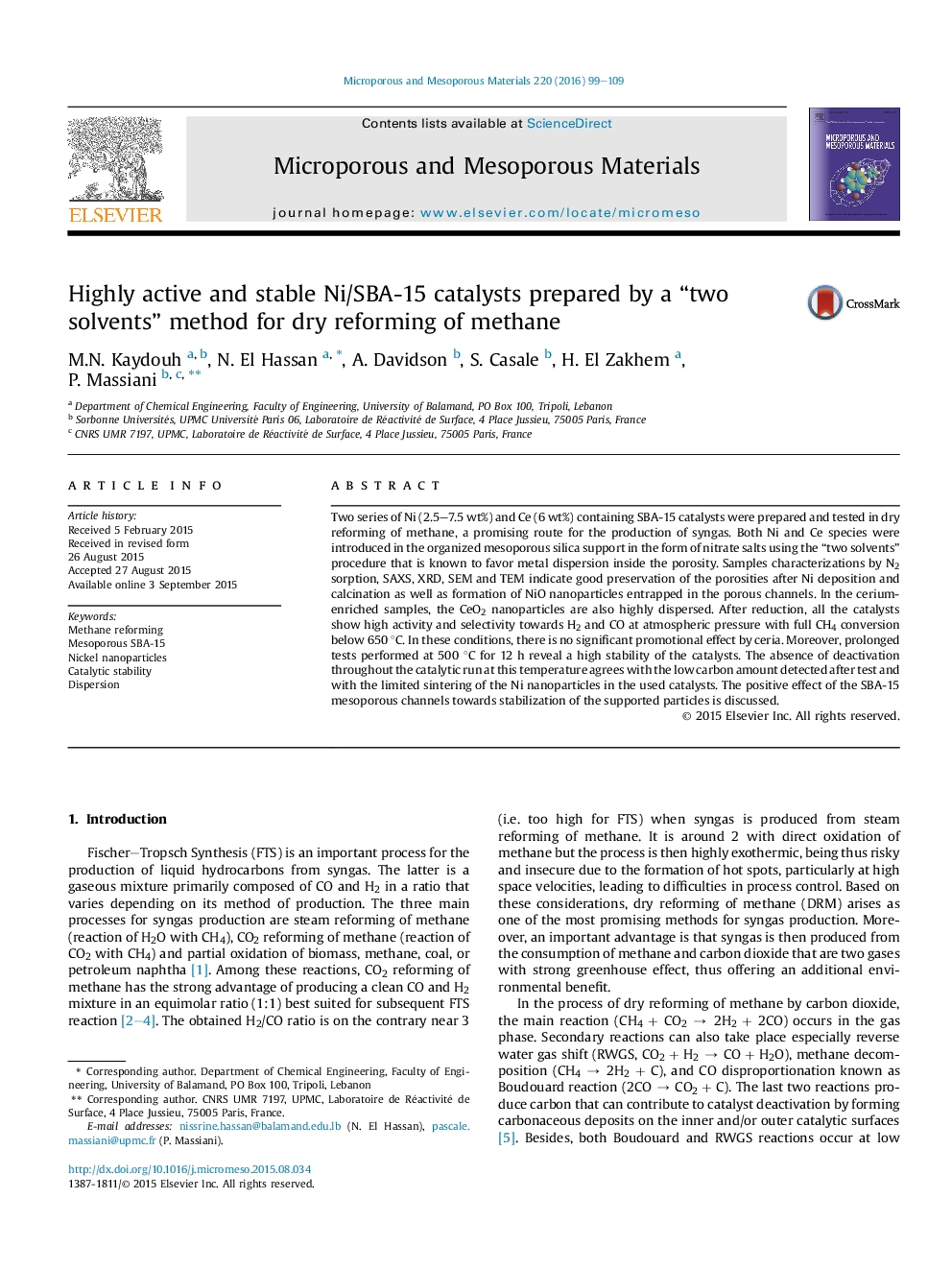| Article ID | Journal | Published Year | Pages | File Type |
|---|---|---|---|---|
| 72239 | Microporous and Mesoporous Materials | 2016 | 11 Pages |
•High Ni dispersion was obtained in the pores of SBA-15 by a two solvent deposition method.•Stabilization of the metal nanoparticles along the channels inhibits nickel sintering and coke formation.•Ni/SBA-15 are highly active and selective in dry reforming of methane, with almost 100% CH4 and CO2 conversion at 600 °C.
Two series of Ni (2.5–7.5 wt%) and Ce (6 wt%) containing SBA-15 catalysts were prepared and tested in dry reforming of methane, a promising route for the production of syngas. Both Ni and Ce species were introduced in the organized mesoporous silica support in the form of nitrate salts using the “two solvents” procedure that is known to favor metal dispersion inside the porosity. Samples characterizations by N2 sorption, SAXS, XRD, SEM and TEM indicate good preservation of the porosities after Ni deposition and calcination as well as formation of NiO nanoparticles entrapped in the porous channels. In the cerium-enriched samples, the CeO2 nanoparticles are also highly dispersed. After reduction, all the catalysts show high activity and selectivity towards H2 and CO at atmospheric pressure with full CH4 conversion below 650 °C. In these conditions, there is no significant promotional effect by ceria. Moreover, prolonged tests performed at 500 °C for 12 h reveal a high stability of the catalysts. The absence of deactivation throughout the catalytic run at this temperature agrees with the low carbon amount detected after test and with the limited sintering of the Ni nanoparticles in the used catalysts. The positive effect of the SBA-15 mesoporous channels towards stabilization of the supported particles is discussed.
Graphical abstractFigure optionsDownload full-size imageDownload as PowerPoint slide
